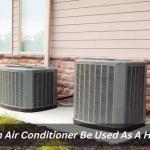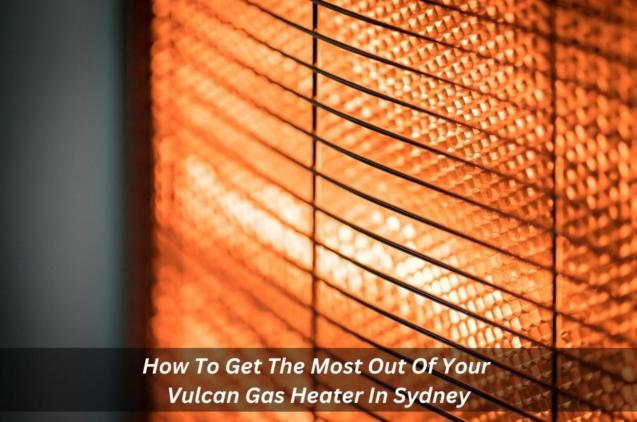
Can An Air Conditioner Be Used As A Heater?
Air conditioners cool rooms using refrigeration. Refrigerants are gases that expand when they get cold, thereby releasing their latent heat (heat) into the surrounding environment. Since heat rises, heating the outside of the building helps warm the inside.
Is it really possible to turn an AC unit into a heater? Yes! It can be done with the right equipment and some planning/preparation. However, it is not recommended by most manufacturers because there is no real benefit over buying a separate electric heater if you have one already.
That said, it certainly is possible to do so and there are several different methods to accomplish this task. The answer to this will vary depending on what kind of air conditioner you have.
A Paloma gas heater is an electric element that can be installed in a natural gas line for residential use. By heating up the gas flowing within the line, this gas heater will keep your home warm when you're away. This device works by converting the natural gas into hot gas, which is then transferred directly to your house via the gas pipe.
Some air conditioners are designed as both cooling units and heaters, while others only include heat functionality.
Types of Gas Heater
Gas heaters come in two main forms – electric or natural gas (also called propane). Both types operate using the combustion principle, where fuel burns inside a chamber and generates heat.
The most common type of electric heater uses electricity to ignite the fuel to produce heat, while a natural gas heater is fueled by natural gas.
Dual programmable timers in a gas heater allow you to set your gas burner timer for both on/off and time settings. This allows you to have two different programs running at once if needed.
Both electric and natural gas heaters operate using the same working principles. They both burn fuel and generate heat inside a heating chamber. Some differences arise from their construction materials, such as glass or steel.
- Electric Heaters
Electric heaters tend to be heavier, however, they offer some additional features through various electronic components.
Convector heaters use an electric heating element in combination with a fan. They radiate warm air around a living area or room while circulating cold air out of the room. This can be used for both comfort and energy efficiency.
Its high-performance filtered fan delivers rapid winter warmth at floor level. This gas heater heats up with the help of its built-in flame detector for flame failure, which instantly shuts off the burner if it detects any flame source. You'll also get a filter clean warning indicator to remind you to empty the charcoal dust filter every 6 months.
- Natural Gas Heaters
Natural gas heaters tend to be lighter because they don’t require electronics. However, they lack certain features like remote controllers, control panels, programmable thermostats and air purifier systems.
Portable gas heaters use natural gas (methane) as fuel for combustion in an enclosed space. They consist of a burner that heats up the air inside a box-like structure. This heated air then passes into a room where people can enjoy its warmth.
What is an oxygen depletion system on a gas heater?
Ever wondered why some heaters seem to burn very hot and some don't? Many homeowners would love to get a better understanding of their heating systems. If you've never checked out your furnace before, now might be a good time to take a look.
When you turn on your heater or oven, you shouldn't have to worry too much about its performance. In fact, the gas supply should be completely shut off. This way, you won't risk carbon monoxide poisoning.
But sometimes, even after turning off the gas supply, your heater continues to run. Why does that happen? That's because they usually come equipped with a built-in oxygen depleter. The reason behind this is simple: if your indoor air contains enough oxygen level in the room, then your heater won't run properly.
"ODS" stands for "oxygen depletion system". It creates a vacuum inside your heater which prevents oxygen from entering the combustion chamber. If this happens, your heater cannot operate correctly, or at least efficiently. Not only does this mean your home becomes warmer than usual, but also much less comfortable.
Oxygen depletion safety system safe level
An oxygen depletion safety system is part of the Rinnai avenger 25 convector series of gas furnaces. They are available in two different designs. Both models provide instantaneous hot water and efficient heat output. However, one comes with an integrated oxygen depleter while another doesn't.
In order to work effectively, the oxygen depletion safety system requires a source of fresh air. Normally, you'd use an exhaust fan to pull fresh outdoor air in, where it mixes with the stale indoor air. Once inside, the oxygen depleters remove most of the oxygen in the air before the mixture reaches the burner.
At the same time, the heater is supplied with regular amounts of fuel, allowing it to produce more heat and keep your house warm. If there's no oxygen left in the air after the oxygen-depleting process, the furnace continues generating heat until the oxygen drops below a safe level.
If your heater has an ODS, it must meet certain requirements set by Australian Standards. These include things like the maximum operating pressure, the minimum safe level of oxygen concentration for your particular model, as well as how long the ODS needs to function.
The lower the reading on your ODS display, the safer your heater is. So, check yours regularly to ensure your safety.



